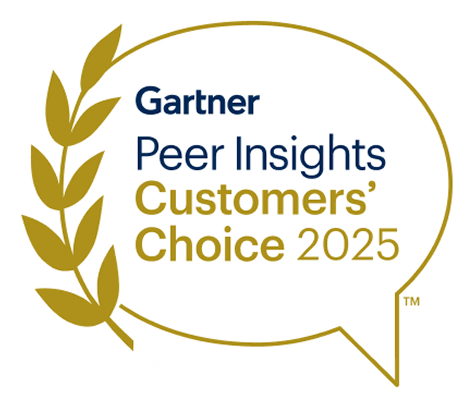Data Security in 2025: Why DSPM Is Now a Business Imperative
At RSAC 2025, I had the opportunity to speak with Adrian Sanabria about one of the most pressing and complex challenges facing security teams today: data security. Since then, the urgency around the future of data security has only intensified.
We're watching a major inflection point unfold across industries. Organizations are generating and storing more data than ever, while simultaneously adopting AI at a pace that outstrips most security programs. At the same time, regulators are enforcing data privacy with increasing sharpness. These trends all converge on one critical question:
Do you know where your sensitive data is - and who can access it?
If the answer is no, then it's time to rethink your approach.
Data is Now The Most Valuable, And Volatile Asset
For years, security tools have operated largely without visibility into the data itself. We've focused on endpoints, perimeters, and identities - all essential layers. But in 2025, that’s no longer sufficient.
Data is now the most valuable, and volatile asset most companies have. We’re seeing this in breach investigations, where the root cause often traces back to unmonitored or duplicated sensitive data left in the wrong place. We're seeing it in AI deployments, where teams rush to fine-tune models or deploy copilots without knowing what's inside the datasets they’re exposing. And we’re certainly seeing it in regulatory fines, many of which stem from nothing more than storing customer data longer than necessary, in the wrong place, or in unsecured formats.
What all of this underscores is a simple truth: you can’t protect what you can’t see.
The Role of DSPM in the Future of Data Security
At Sentra, we’ve built our platform around a core philosophy that Data Security Posture Management (DSPM) is not just a security tool, it’s the future of data security, an enabler of responsible innovation. The foundation starts with sensitive data discovery. Most organizations are surprised by how much sensitive data exists outside expected systems- in backups, temporary stores, or SaaS apps that were never properly offboarded. From there, classification adds context. It’s not enough to label something as “PII”, we need to understand how sensitive it is, who owns it, how it is being used, and how it should be governed.
We built Sentra as a cloud-native solution from day one. That means it works across IaaS, SaaS, PaaS, and even on-prem environments without needing agents or pulling data outside the customer’s environment. That last point is non-negotiable for us. As a security company, we believe strongly that extracting customer data for analysis creates unnecessary risk and liability.
To support classification at scale, especially for unstructured data, we developed our own language models using open-source LLMs. This provides the deep contextual understanding needed to accurately label large volumes of data all while maintaining cost efficiency and avoiding unnecessary compute overhead.
AI, Risk, and Responsibility in Data Securityy
One of the biggest shifts we’re seeing in the market is how AI has elevated data security from a technical concern to a boardroom issue. Security teams are now being asked to approve large-scale data usage for AI training, RAG systems, copilots, and internal assistants. But very few have the tools to answer basic questions about what’s in those datasets.
I’ve worked with customers who only realized after deploying AI that they had been exposing medical records, credentials, or confidential meeting data to the model. Once it’s in, you can’t pull it back. That’s why data classification and risk detection must come before any AI integration.
This is precisely the use case we had in mind when we built Sentra’s Data Security for AI Module. It helps teams scan, assess, and verify the contents of data before it ever touches a model. The goal isn’t to slow down innovation - it’s to make it safer, auditable, and repeatable.
Proactive Risk Management Helps Enterprises Ship Faster
One of the most exciting developments we’ve seen for the future of data security is how quickly Sentra’s data security platform becomes a strategic asset for enterprise data risk management. Time to value is fast in many cases, our customers discover major data risks just days after deployment. But beyond those early wins, the real power lies in alignment.
When security leaders can map data to risk, compliance, and governance frameworks, and do so continuously, they’re no longer operating reactively. They’re enabling the business, helping teams ship faster with fewer unknowns, and building trust around how AI and data are managed.
At scale, this kind of maturity is the difference between organizations that can confidently embrace generative AI and those that will always be playing catch-up.
A Final Word
From my time in the Israeli Defense Forces and Unit 8200 to helping enterprises build modern security programs, I’ve seen one truth over and over again: data left behind is data exposed. The volume may grow, the threats may change, but this principle doesn’t.
In 2025, securing data is no longer an aspiration, it’s a baseline. Whether you’re preparing for your next AI initiative, facing regulatory audits, or just trying to get visibility into sprawling cloud environments, DSPM should be your first step. At Sentra, we’re proud to help lead this change. And we believe the organizations that take control of their data today will be the ones best positioned to lead tomorrow.
<blogcta-big>







%201.webp)


.webp)
.webp)

